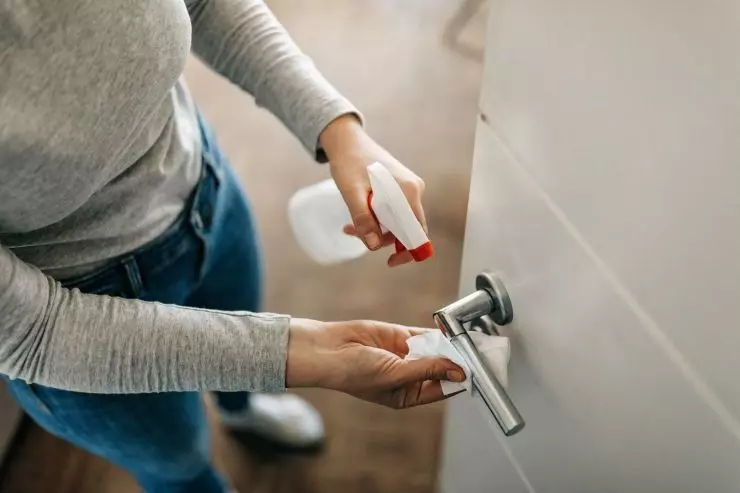
As the weather warms, not only do we grab the beach chairs and sun hats for a day at the lake soaking up the sun, but it is also that time of the year to start thinking about important topics like sun safety, overheating, heatstroke, and hydration. Additionally, for young children (often under the age of 7), as the weather warms, illnesses like Hand, Foot, and Mouth Disease (HFMD) and Herpangina may become more widespread. The viruses that cause these conditions thrive in warm weather, and summer months create favorable conditions that may allow it to spread more easily.
What is Hand, Foot, and Mouth Disease?
HFMD is a common viral illness that primarily affects young children, though it can sometimes occur in adults. The disease is characterized by fever, sores in the mouth, and a rash on the hands and feet and buttocks. It is highly contagious and spreads through direct contact with saliva, mucus, fluid from blisters, or stool of an infected person.
What is Herpangina?
Herpangina is similar to HFMD and caused by the same viruses; however, typically only the mouth and throat are affected by painful lesions.
Symptoms of HFMD and Herpangina
The symptoms of HFMD and Herpangina usually appear three to five days after exposure to the virus, known as the incubation period. The illness typically starts with:
- A fever (often the first sign and often low grade under 101 degrees F). Fever can be high with an abrupt onset with Herpangina.
- Mouth sores or blisters on the tongue, gums, and inside of the cheeks which can make eating and drinking uncomfortable.
- Sore throat (due to lesions on the tonsils and soft palate that may be difficult to see)
- A skin rash on the palms of the hands, soles of the feet, and sometimes the buttocks. The rash can turn into blisters but usually does not itch. These rashes are typically not seen in Herpangina.
- Irritability in infants and toddlers
- Loss of appetite
- General discomfort
- Rarely, associated with vomiting
Diagnosing HFMD
A trip to the doctor is needed for an accurate diagnosis in which the characteristic rash and mouth sores are often enough to diagnose the disease. However, a throat swab or stool sample may be tested to identify the virus in rare cases when the diagnosis is more questionable.
Treatment for HFMD and Herpangina
There is no specific treatment for HFMD or Herpangina, as they are viral infections, and antibiotics are ineffective. The focus is maintaining good hydration, as mouth sores can make eating and drinking challenging for young children. To help with this, it is important to relieve discomfort as the virus takes its course. Here are some recommendations for alleviating symptoms:
- Over-the-counter pain relievers like acetaminophen or ibuprofen can help reduce fever and relieve pain from mouth sores. Always consult your doctor before giving any medication to young children.
- Hydration is key. Encourage your child to drink plenty of fluids to stay hydrated. Cold foods like ice cream or popsicles can soothe mouth sores and help maintain hydration.
- Offer soft, easy-to-swallow foods to avoid irritating mouth sores. Avoid acidic or spicy foods that can exacerbate the pain.
- Encourage plenty of rest. Ensure the child gets enough rest to support the immune system in fighting the virus.
It often takes about 1 week (sometimes up to 2-3 weeks) for the virus to run its course and symptoms to resolve.
Preventing HFMD and Herpangina
Because HFMD and Herpangina are usually spread through direct contact, prevention is key. You can help prevent the spread of HFMD by:
- Practicing proper hand washing. Frequent and thorough hand washing with soap and water, especially after using the toilet, changing diapers, and before eating.
- Clean and disinfect frequently touched surfaces and objects, such as toys, doorknobs, and bathroom fixtures, as the virus may survive for short periods of time on objects.
- Keep infected children away from school or daycare during the contagious period, usually the first week of illness or until the fever and open sores have healed.
- Teaching your children good hygiene. Educate children on the importance of hand washing and not sharing cups, utensils, or personal items.

When to Seek Medical Attention
Most cases of HFMD and Herpangina are mild and resolve on their own within seven to ten days. However, seek medical attention if your child:
- Is unable to stay hydrated due to painful mouth sores
- Has a high fever that lasts more than three days
- Shows signs of dehydration, such as dry mouth, reduced urine output, or lethargy
- Develops a severe headache, stiff neck, back pain, or difficulty breathing which may indicate complications
Keeping Your Family Happy and Healthy
While uncomfortable and highly contagious, hand, foot, and mouth disease and herpangina are usually mild illnesses that resolve on their own; understanding the symptoms, treatment options, and preventive measures can help manage the diseases effectively and reduce their spread. If you have any concerns or your child's symptoms worsen, don't hesitate to contact your doctor for further guidance.
By staying informed and practicing good hygiene, you can help protect your family from HFMD and ensure a quicker recovery if infection occurs.